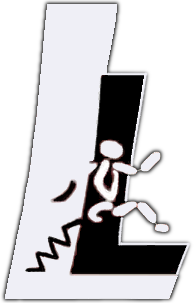Differences
This shows you the differences between two versions of the page.
| Both sides previous revision Previous revision | Next revision Both sides next revision | ||
|
start [2020/05/08 17:06] Maziar Sharbafi |
start [2020/08/24 10:15] Martin Grimmer [A biarticular passive exosuit to support balance control can reduce metabolic cost of walking] |
||
|---|---|---|---|
| Line 27: | Line 27: | ||
| ====== Latest Publications ====== | ====== Latest Publications ====== | ||
| + | ==== Doppler Radar for the Extraction of Biomechanical Parameters in Gait Analysis | ||
| + | |||
| + | Doppler Radar for the extraction of biomechanical parameters during walking was investigated in one of our latest studies in cooperation with the Signal Processing Group of Prof. Zoubir. Ann-Kathrin Seifert and [[lab_members: | ||
| + | |||
| + | |||
| + | {{ :: | ||
| + | |||
| + | **Abstract: | ||
| + | The applicability of Doppler radar for gait analysis is investigated by quantitatively comparing the measured biomechanical parameters to those obtained using motion capturing | ||
| + | and ground reaction forces. Nineteen individuals walked on a treadmill at two different speeds, where a radar system was positioned in front of or behind the subject. The right knee angle was confined by an adjustable orthosis in five different degrees. Eleven gait parameters are extracted from radar micro-Doppler signatures. Here, new methods for obtaining the velocities of individual lower limb joints are proposed. Further, a new method to extract individual leg flight times from radar data is introduced. Based on radar data, five spatiotemporal parameters related to rhythm and pace could reliably be extracted. Further, | ||
| + | for most of the considered conditions, three kinematic parameters could accurately be measured. The radar-based stance and flight time measurements rely on the correct detection of the time instant of maximal knee velocity during the gait cycle. This time instant is reliably detected when the radar has a back view, but is underestimated when the radar is positioned in front of the subject. The results validate the applicability of Doppler radar to accurately measure a variety of medically relevant gait parameters. Radar has the potential to unobtrusively diagnose changes in gait, e.g., to design training in prevention and rehabilitation. As contact-less and privacy-preserving sensor, radar presents aviable technology to supplement existing gait analysis tools for long-term in-home examinations. | ||
| + | |||
| + | For further projects and publications of [[lab_members: | ||
| + | |||
| + | |||
| ==== A biarticular passive exosuit to support balance control can reduce metabolic cost of walking ==== | ==== A biarticular passive exosuit to support balance control can reduce metabolic cost of walking ==== | ||




